|
|
|
The Sami:
|
|
Reindeer
People of Alaska |
 |
| In 1894 and 1898, 137 Sami herders and their
families from Norway and Finland were hired by
the United States government Reindeer Project to
introduce herding skills to the Inupiaq and
Yup'ik Peoples of Western Alaska during a time
of famine. They worked with reindeer that were
brought to Alaska from the Russian Chukotka
Peninsula, first by Chukchi herders in 1892, and
later by members of the 1898 expedition. |
| |
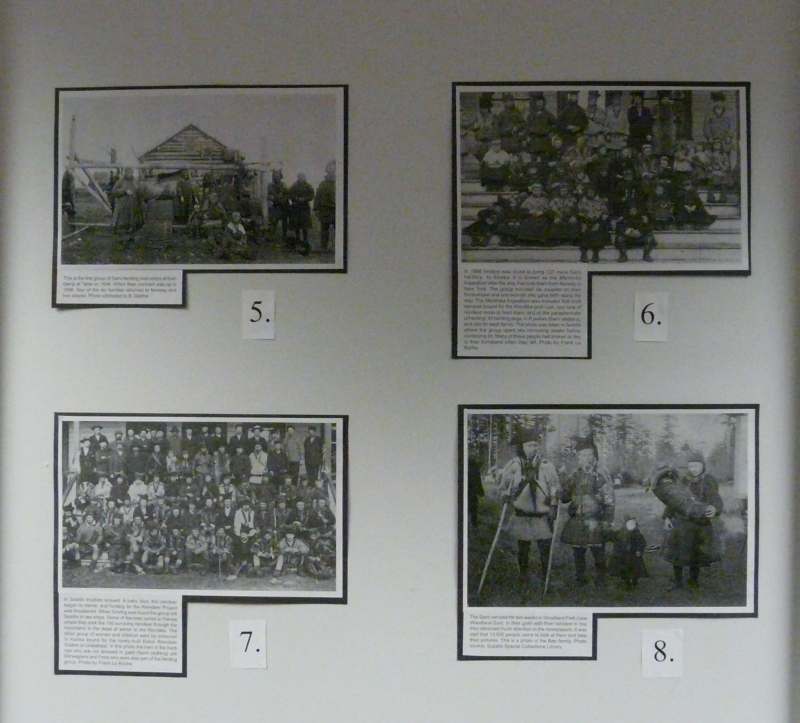 |
At the end of their two-year tours of duty with
the federally-funded Reindeer Project, some of
the Sami herders staved on in Alaska to
establish homes, often marrying into Alaska
Native families. Working together, they built up
the large reindeer herds that provided food,
clothing and transportation for many Alaskans.
This was an economic boost that lasted into the
1920s and 30s. During this period, many of the
Alaska Sarni lost contact with their relatives
in Norway and Finland. |
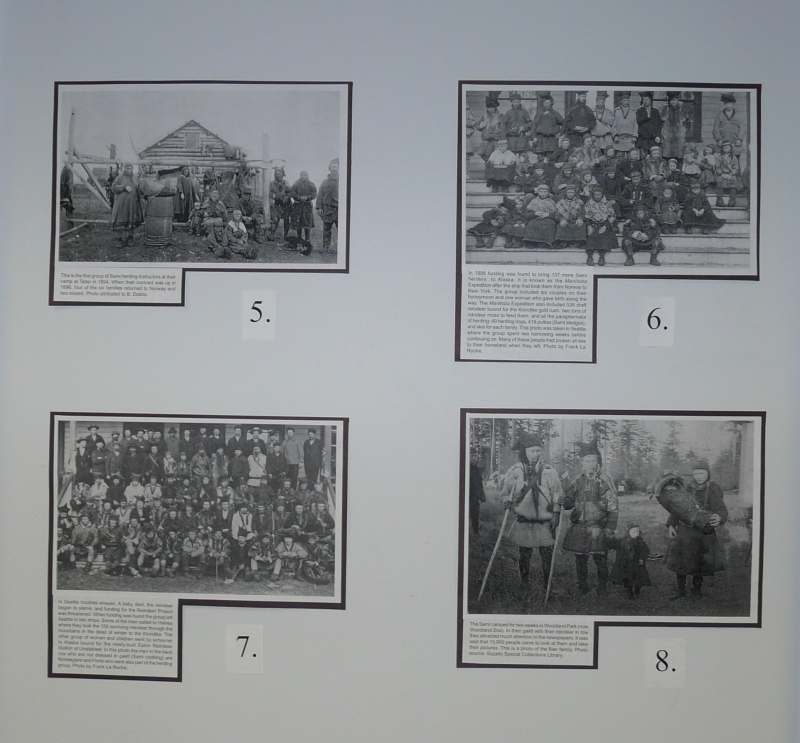 |
In 1920, herding changed when the Lomen
brothers, Norwegian American businessmen from
Minnesota, moved to western Alaska. The Lomens
began to buy up herds on the Seward Peninsula,
established control over the herding activities
and aggressively promoted the sale of reindeer
meat in the O.S. and Canada. Then the stock
market crash of 1929 impacted the exporting of
reindeer meat, the Lomens gave up,and their
herds joined the caribou. In 1937, the U.S.
Reindeer Act transferred the ownership of all .
reindeer to Alaska Natives, and the Sami were
forced to sell their herds at a loss. While some
moved south to Kitsap County, Washtnqton, most
Sami stayed on in Alaska.
|
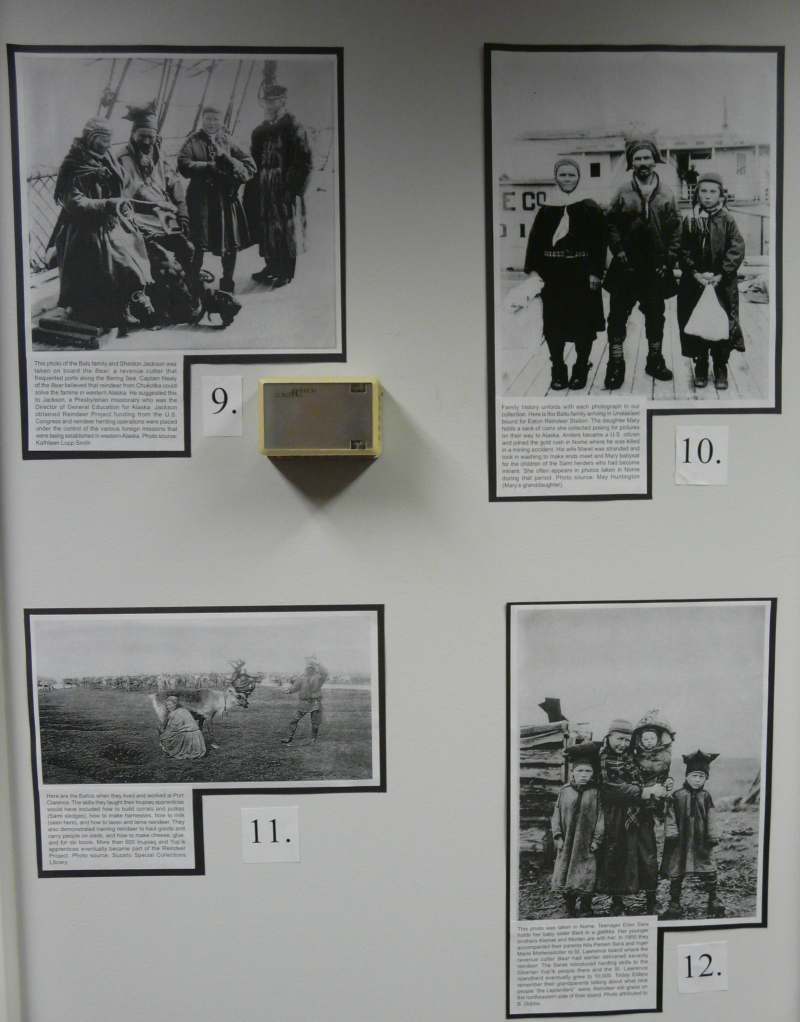 |
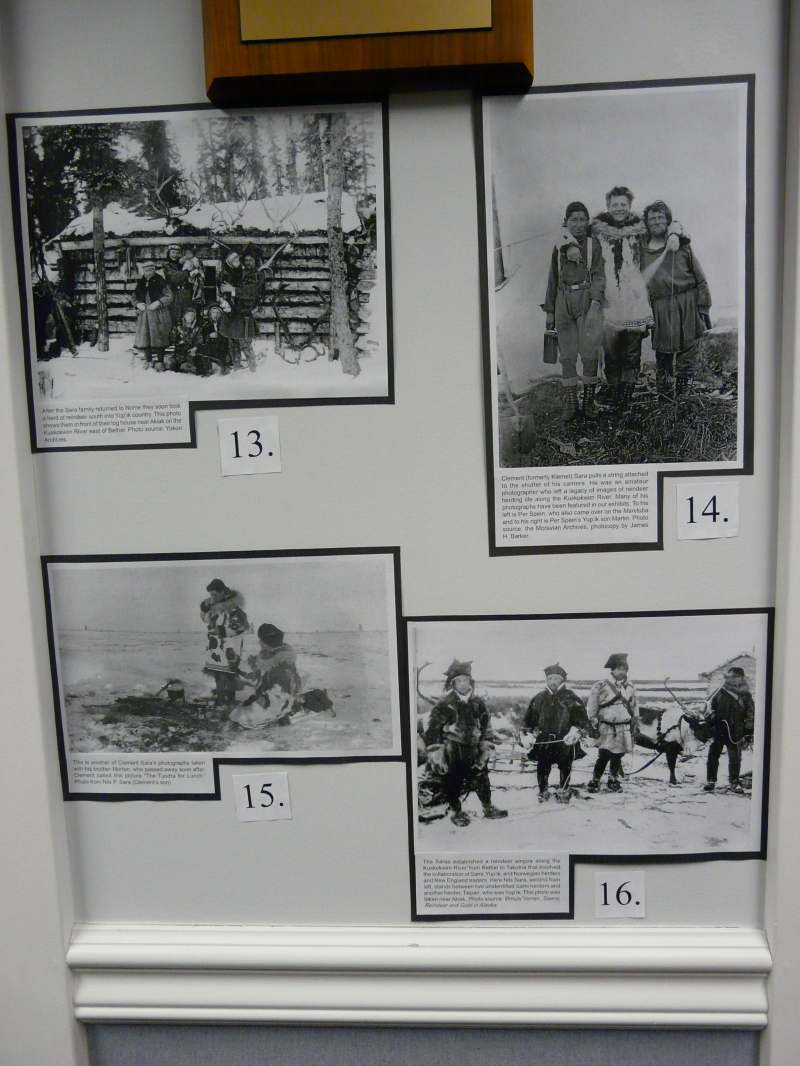 |
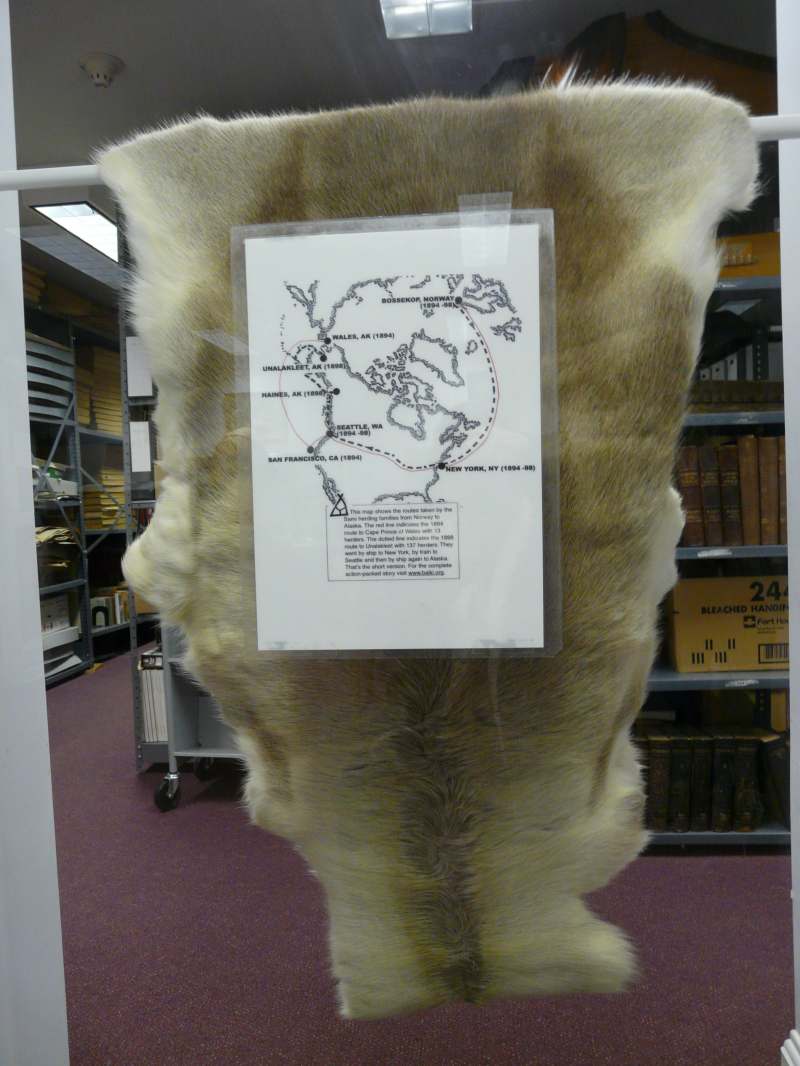 |
Perhaps more than anything else, the
reindeer symbolizes the life, health, vitality
and success of the Sami people and their unique
culture.
Historically, the Saml and the reindeer were
interlocked in survival, both depending on one
another for life in an unforgiving landscape.
The Sami treated their reindeer as revered gifts
from the Earth, using all parts of the reindeer
in an ecologically friendly and spiritual
manner. Reindeer were used as draught animals,
as a food source, hides were used for clothing,
bones for tools and female reindeer were milked
to provide sustenance. The reindeer truly
provided the means for existence.
As a result, the Sami culture was centered
around the care and preservation of this
magnificent life giving creature. This was
certainly true for the history of Alaska's
Sarni population; and is certainly true for
contemporary Sami living in the northern parts
of Finland, Norway and Sweden.
|
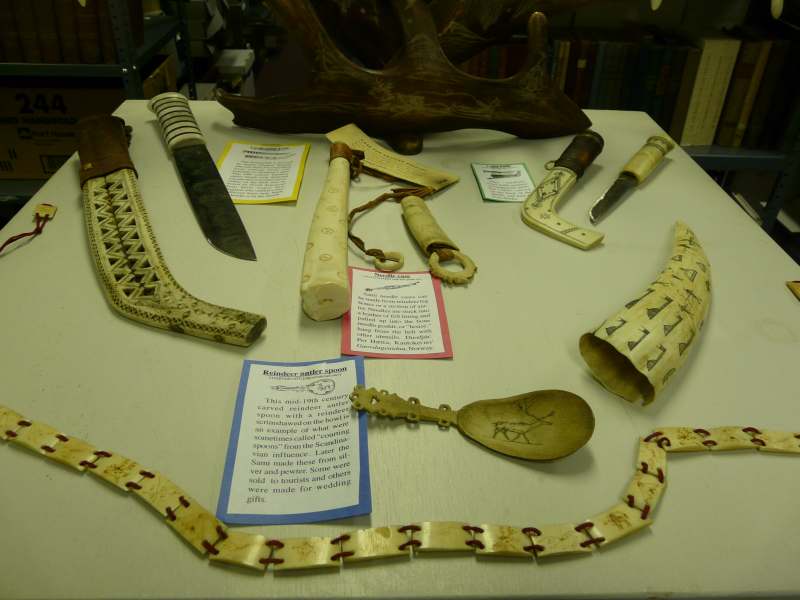 |
| Large Camp Knife STOURANIBBI [storanee-bee].
. .is favored by Samiherders who use them for
everything from cutting fresh tree branche~ to
skinning deer. This 19th Century reindeer antler
sheath with diamond cutouts and scrimshawed
reindeer on back was restored by North American
Eric Bergland.
Camp Knife SAMENIBBI [sah-may-nee-bee] .. .is
a medium sized multi-purpose scrimshawed nibbi
which has "1895" carved on the back of the
sheath, and may be from Alaska.
Needle case NALLO GOAHTI [nah-lowgwah-tee] Sami
needle cases can be made from reindeer leg bones
or a section of antler. Needles are stuck into
a leather or felt lining and pulled up into the
bone needle goahti, or "house." They hang from
the belt with other utensils.
Antler Spoon COARVEBASTE [choarvuh-bah-stay]
This mid-19th Century carved spoon with a
reindeer scrimshawed' on the bowl is an example
of what were sometimes called "courting spoons"
of Scandinavian influence.
|
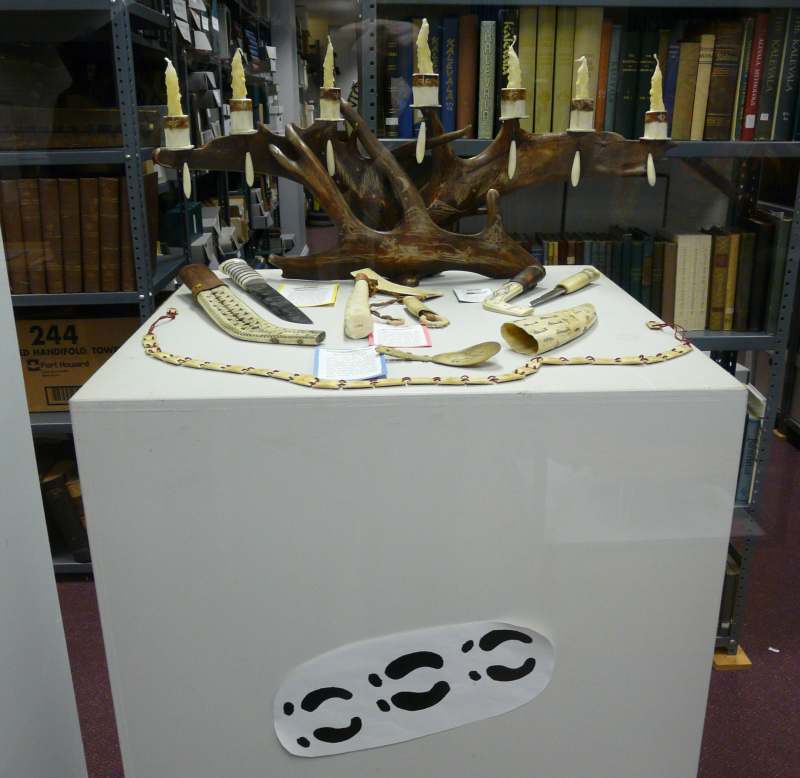 |
Antler Candelabra This reindeer candelabra
with hand made candles and dates to around
1870-1900. Etched into the antlers is a three
dimensional landscape with figure driving
sleigh through snow pulled by a single reindeer;
tear shaped pieces are bone.
This reindeer antler with scrimshaw has
double-sided depiction of Sami scenes. This side
has imagery of reindeer and drivers.
|
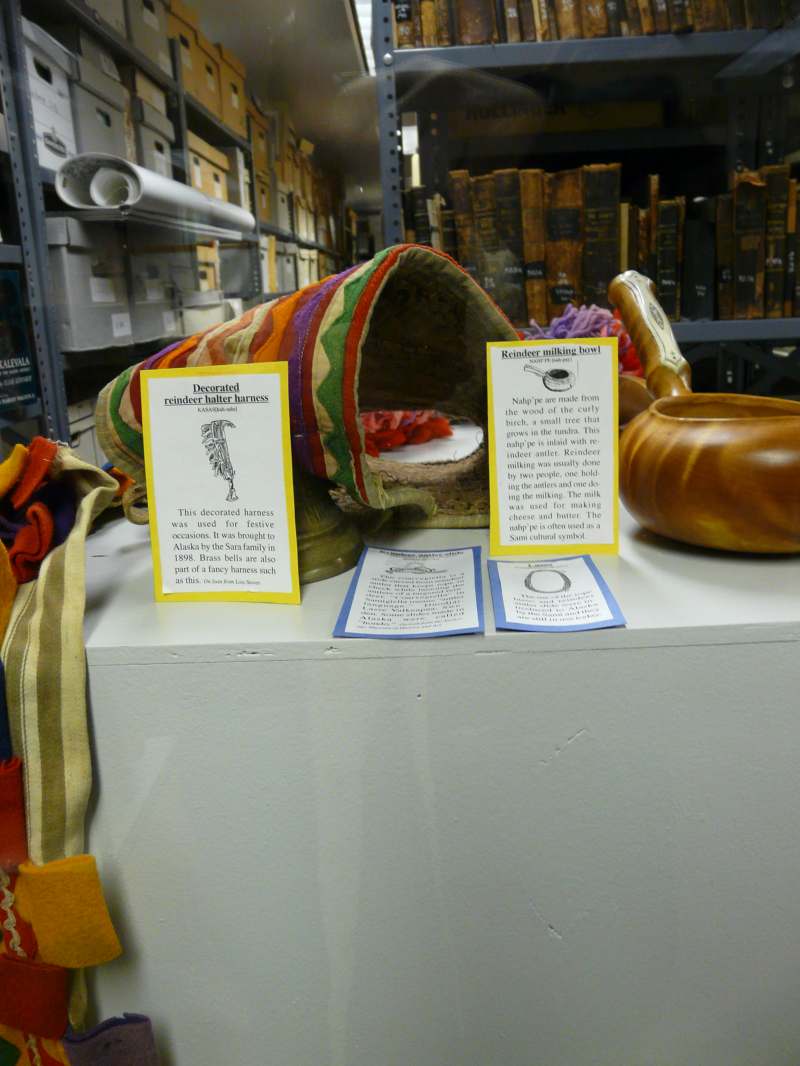 |
| Decorated reindeer halter harness KASAS [kahsahs]
This decorated harness was used for festive
occasions. It was brought to Alaska by the Sara
family (see members of the family in historic
photos). Brass bells are also part of a fancy
harness such as this. The brass bell associated
with this harness dates to 1871.
Reindeer Milking Bowl NAHP'PE [naypay]
Nahp'pe are made from the wood of curly birch, a
small tree that grows in the tundra regions of
sub-arctic regions. This nahp'pe is inlaid with
reindeer antler. Reindeer milking was usually
done by two people, one holding the antlers and
one doing the milking. The milk was used for
making cheese and butter. The nahp'pe is often
used as a Sami cultural symbol.
|
 |
Lasso SUOHPAN-[soo-oh-pahn] The use of the
rope lasso -and reindeer antler slide were
introduced to Alaska by the - Sami and they are
still in use today.
Antler Slide COARVEGIELLA [chore-veh-gyella]
HONDO [hon-do] is a slide carved from antler
that keeps rope in check while lassoing the
antlers of a targeted reindeer. "Coarvegiella"
in Sarnigiella means antler language. Some
slides made in Alaska were called "hondo."
|
 |
Reindeer skin bag with Pewter Embroidery
Intricate embroidery with pewter thread
(sometimes called tin thread) is a specialty of
Central and South Sami duodjars who use it to
decorate the bib fronts and belts of the gakti
(traditional clothing) from these areas. The
technique is also used to embellish reindeer
leather bags, bracelets, watch bands and
chokers.
Reindeer Skin Commodities Bag KAFF A VUOSSA [kab-fab-vwoh-sa]
This coffee bag from Kautokeino/ Guovdageaidnu
in Sami, is used to carry coffee, tobacco,
sugar and other commodities. It is hung from the
belt. The copper coffee pots brewed the bags'
contents and the men's pipe smoked the imported
tobacco that made a difficult life in a harsh
environment more enjoyable while watching a
herd.
Silver spoon with ringlets Scandinavian
silversmiths made spoons like these for Sami
families, copying Sami reindeer antler spoon
styles. They were highly prized as wedding
gifts. Later Sami duodjars started to work in
silver too. This early example marked with
silver stamps.
|
| |
| |
| |
| |
| |
| |
| |
| |
|
IronwoodInfo.com is a Michigan,
Non-Profit Media Corporation |
|
Contact IronwoodInfo.com |
|
email:
mail@ironwoodinfo.com
snail mail: P.O. Box 305 Ironwood, MI 49938
Telephone
906-885-5683
Fax
906-884-2544 |
| |
|
|